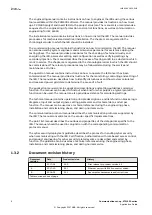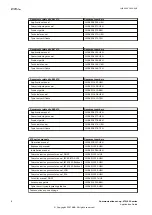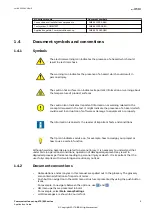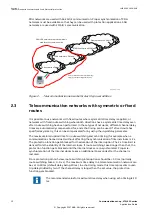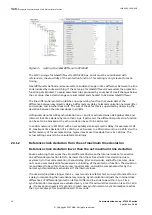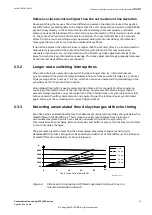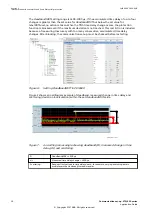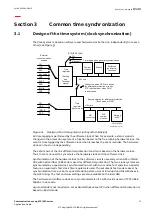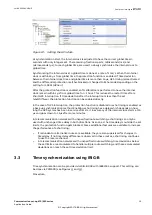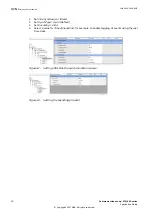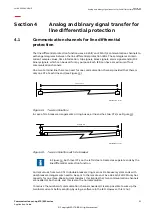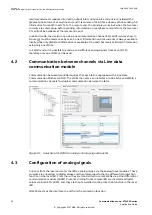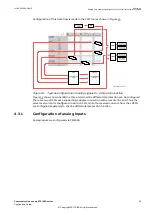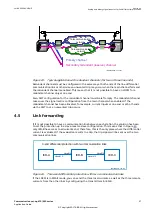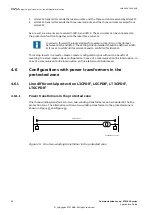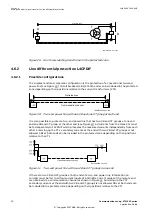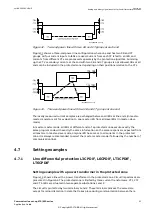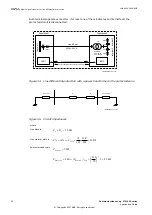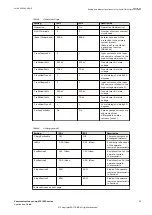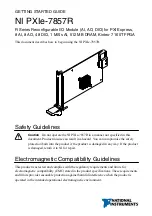
Fast clock synchronization mode
At start-up and after interruptions in the GPS, PTP or IRIG B time signals, the deviation
between the external time system and the internal differential time system can be substantial.
A new start-up is also required, for example, after maintenance of the auxiliary voltage system.
When the time difference is > 16 μs, the line differential protection function is blocked and the
time regulator for the hardware clock automatically uses a fast mode to synchronize the clock
systems. Time adjustment is made with an exponential function, that is, with big time
adjustment steps in the beginning, and then smaller steps until a time deviation between the
GPS time and the differential time system of < 16 μs has been reached. The protection function
is then enabled and the synchronization remains in fast mode or switches to slow mode
depending on the setting.
Slow clock synchronization mode
During normal service, a setting with slow synchronization mode is used. This prevents the
hardware clock to make too big a time steps (> 16 µs) emanating from the requirement of
correct timing in the line differential protection function.
3.2
Time synchronization using a built-in GPS receiver
GUID-1E6A6837-17F8-437E-B1DD-4296DC859351 v1
Telecommunication networks with unspecified route switching require that the line
differential protection IED's built-in GPS receiver is used. This way the protection function can
operate correctly independent of asymmetric delays in communication channels.
The maximum allowed time deviation in a telecommunication network is 40 ms representing
the sum of deviations in both directions. It is also possible to make an asymmetric split, for
example 10 ms in one direction and 30 ms in the other direction, because the deviation can be
accurately measured when GPS timing is available. With longer deviations, the protection
function gets blocked.
Maximum transmission time
T
d
= 40 ms (f reverse)
IEC07000160-1-en.vsdx
Unspecified
route switching
A
B
C
GPS
clock
GPS
clock
GPS
clock
IED
IED
IED
IEC07000160 V1 EN-US
Figure 9:
Three-end application using IEDs' built-in GPS receivers
With good GPS antenna visibility, it takes up to 15 minutes for the GPS system to find the
satellites (connection to a minimum of four satellites required), and start synchronizing the
IED's internal clock with global time from the GPS system.
Section 3
1MRK 505 382-UEN E
Common time synchronization
18
Communication set-up, 670/650 series
Application Guide
© Copyright 2017 ABB. All rights reserved
Summary of Contents for Relion 670 series
Page 1: ...Relion 670 650 SERIES Communication set up 670 650 series Version 2 2 Application Guide...
Page 2: ......
Page 10: ...4...
Page 99: ...93...



